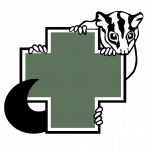RESCUE ADVICE
Flying-foxes
Flying-foxes are a type of bat, a unique group of mammals capable of sustained flight. Also known as fruit bats, these nomadic mammals traverse extensive areas of Australia, feeding on native blossoms and fruits, which helps in spreading seeds and pollinating plants. As one of Australia’s key pollinators, they play a crucial role in maintaining the health of ecosystems by dispersing seeds and pollen over long distances.
Unlike some bats, flying-foxes do not echolocate; instead, they navigate the night sky using their excellent eyesight and strong sense of smell. They have long lifespans but low reproductive rates, with females typically giving birth to just one pup per year. Although flying-foxes are sometimes viewed as pests due to their impact on crops, they are vital to ecosystem health. Their seed dispersal and pollination activities significantly contribute to forest regeneration and the overall balance of their habitats.
If you find an injured or sick flying-fox, please call our 24/7 Rescue Line on 0418 628 483. It is operated by volunteers at WIRES. They will alert our team and a trained rescuer will be out as soon as possible.
Flying-foxes in the Hunter region
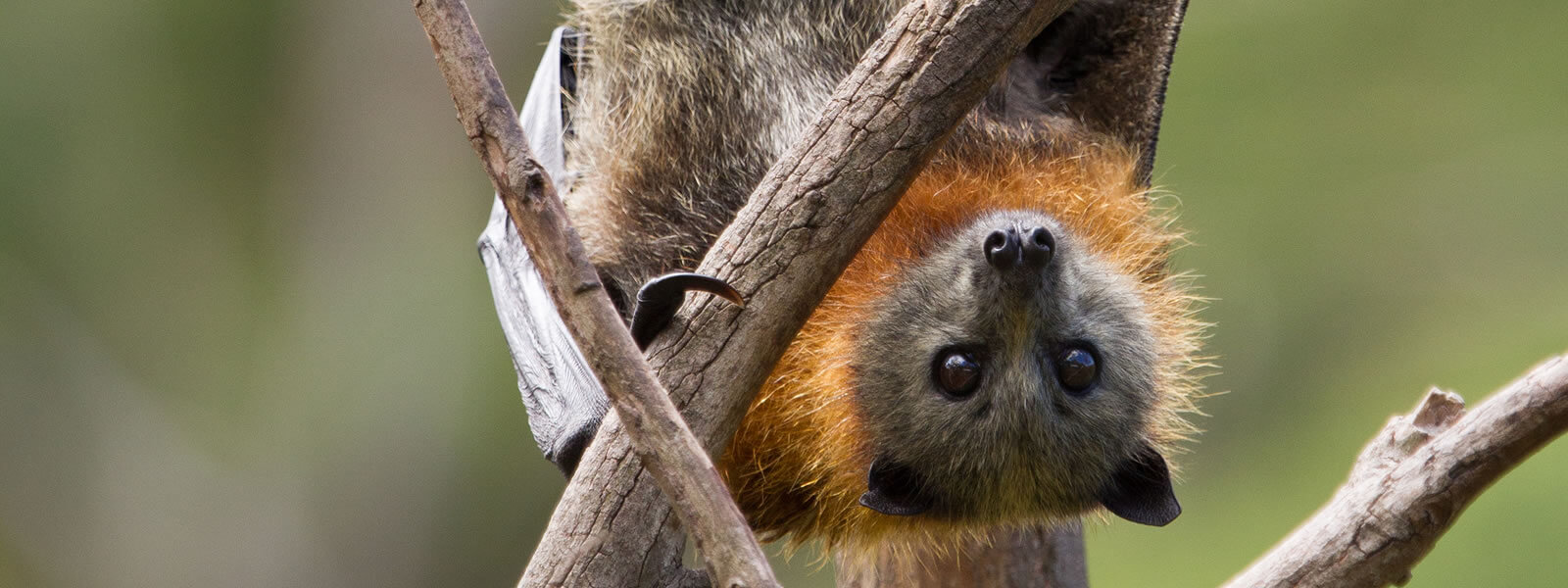
Grey-headed Flying-fox
The Grey-headed Flying-fox (Pteropus poliocephalus) is easily recognisable by its rusty reddish-coloured collar, grey head and hairy legs. Adults have an average wingspan up to 1 metre and can weigh up to 1 kilogram. It is also the most vulnerable species because it competes with humans for prime coastal habitat along the east coast from south-east Queensland down to Victoria.
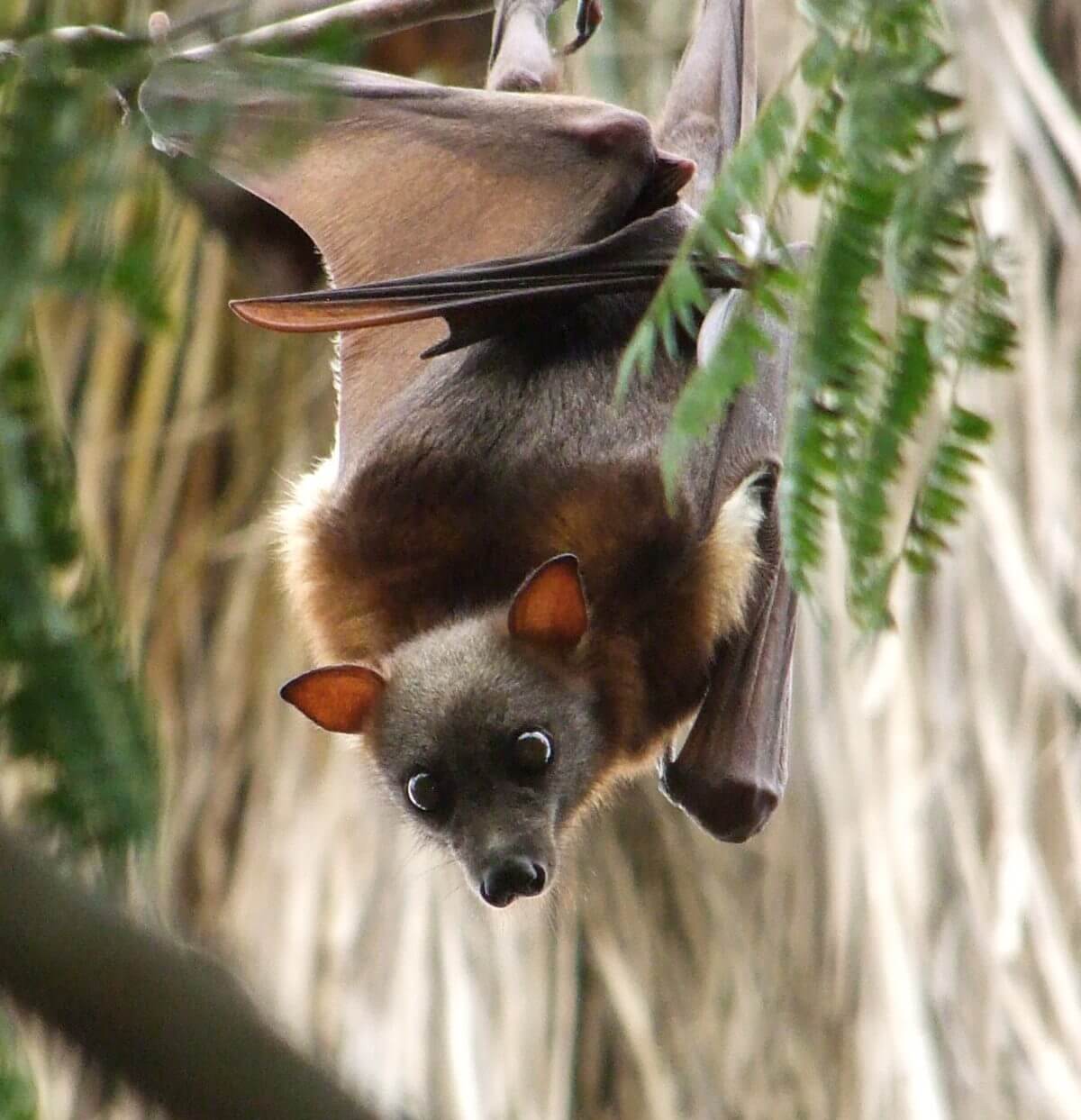
Little Red Flying-fox
The Little Red Flying-fox (Pteropus scapulatus) is the smallest Australian flying-fox weighing 300–600 grams with reddish brown coloured fur. Little Reds will often fly much further inland than other flying-foxes. They occupy a broad range of habitats found in northern and eastern Australia including Queensland, Northern Territory, Western Australia, New South Wales and Victoria.
Rescue Advice
What should you do if you find an injured, sick or orphaned flying-fox?
NSW Health advises that the public should avoid direct contact with flying-foxes. There is always the possibility of being scratched or bitten and it leading to infection. Members of the community should not handle flying-foxes unless they have been trained, vaccinated against Australian Bat Lyssavirus and use the proper protective equipment. If you come across a sick or injured flying-fox, or one that is in a low-lying tree, please call our 24/7 Rescue Line on 0418 628 483. This number is operated by the team of volunteers at WIRES. They will alert our team immediately and we’ll have a trained volunteer out as soon as possible.
Scratched or bitten by a flying-fox?
If you are bitten or scratched by a flying-fox, the wound should immediately be washed gently but thoroughly with soap and water for at least 5 minutes, an antiseptic, such as povidone-iodine should be applied, and a doctor consulted as soon as possible.
Threats to flying-foxes
Due to rapidly declining numbers over a relatively short period of time, the grey-headed flying-fox is now listed as a threatened species in NSW and is protected by law. As they share the coastal areas with humans, they are increasingly setting up camps in urban areas which places them at higher risk.
Common reasons for rescues include:
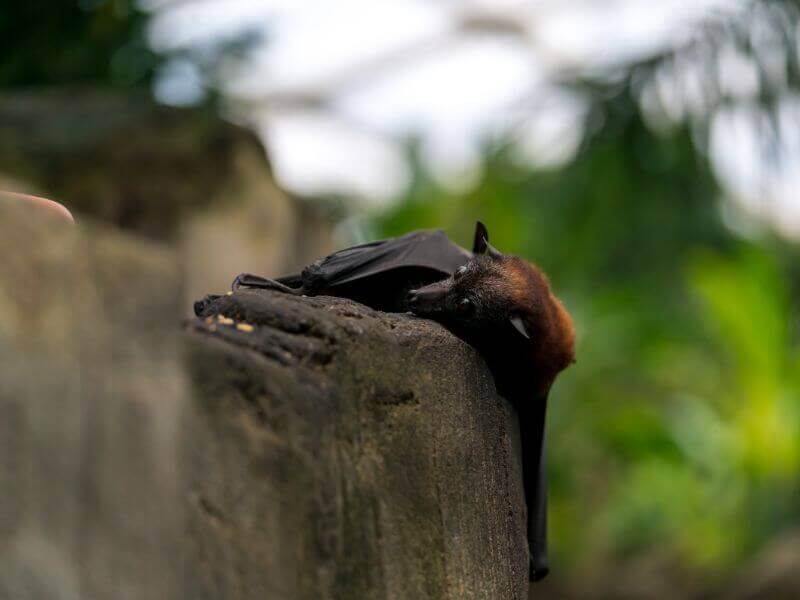
Heat exhaustion
Huge numbers of flying-foxes die during summer heat waves. When a bat becomes tangled in fruit tree netting on a hot day, heat stress is a significant concern in addition to direct injuries from the entanglement.
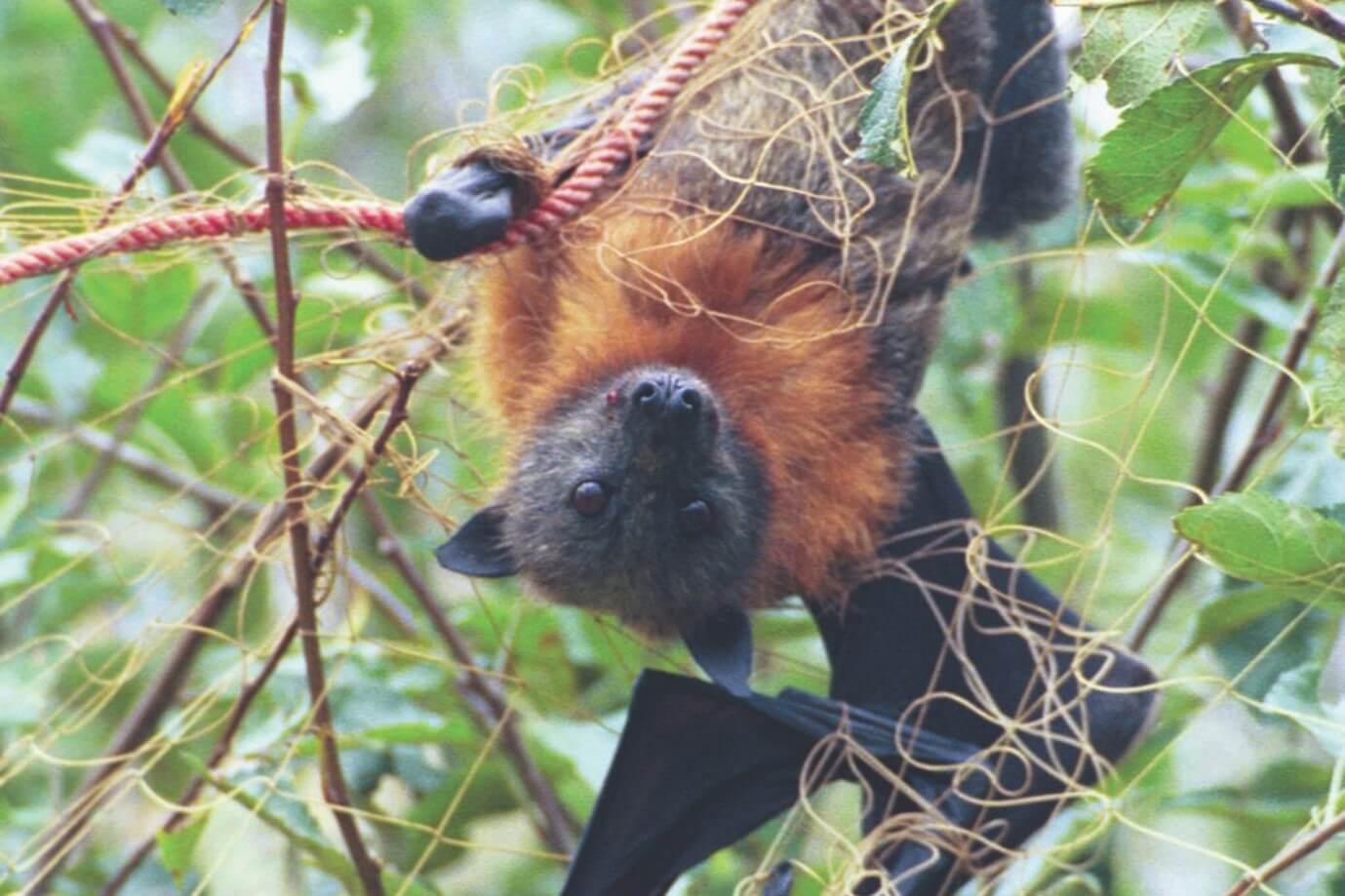
Netting entanglement
Tree netting is a popular way to protect fruit from wildlife, particularly in urban areas, but the wrong type of netting can be deadly. Hungry animals are easily caught in ‘bird netting’, which has a mesh size greater than 1cm square.
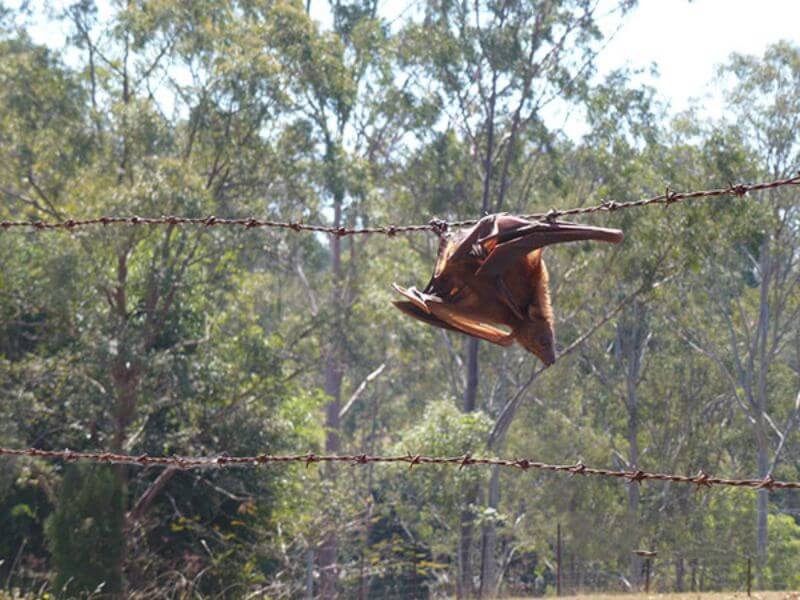
Entanglement with fencing
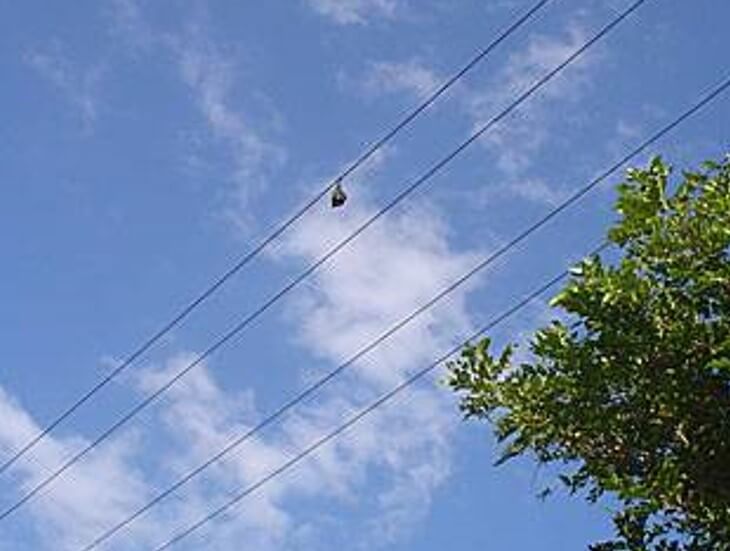
Electrocution from power lines
It is common for flying-foxes to be electrocuted when they try to land on powerlines. Unfortunately there is not much we can do to prevent electrocutions on powerlines. However, in spring and summer it is important to check for orphaned young. Pups will often survive an electrocution that has killed the mother and must be removed by a vaccinated and trained volunteer.

Urbanisation
The main threat to flying-foxes is clearing or modification of native vegetation. This removes appropriate roosting habitat and limits availability of natural food supplies. Loss of habitat and urbanisation across south-eastern Queensland and north-eastern NSW has seen the removal of annually reliable winter feeding sites. This process continues.
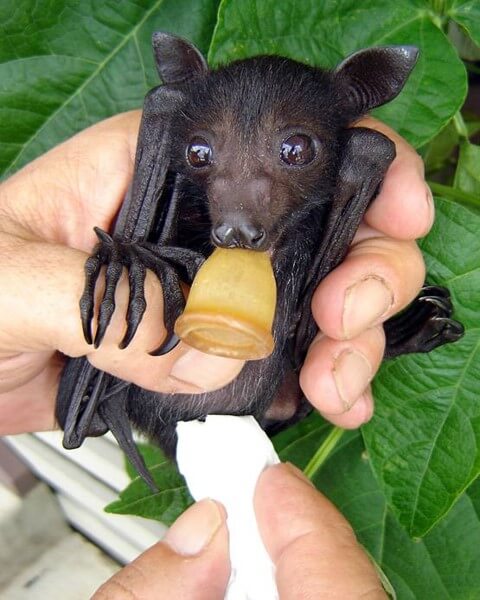
Other reasons
Injuries from feeding on introduced trees and being persecuted at their camps are amongst other reasons flying-foxes need to come into care. Changing weather patterns and extreme weather events from climate change disrupt food and water supplies for flying foxes. This has led to starvation, pup abandonment, decreased reproductive success, and altered distribution
Living with flying-foxes
Flying-foxes often undeservedly get a bad name. They’re social animals and would rather avoid humans where possible. They drink nectar, not blood as some may fear, and as far as we a know, they do not celebrate Halloween! Flying-foxes feed on the nectar and pollen of native blossoms and fruits such as figs. Flying-foxes are beneficial to the health of vegetation, as they spread seeds and pollinate native plants.
Researchers speculate that flying-fox movements could be related to food scarcity, nectar flows or seasonal variations.
Disease – who is at risk?
Flying-fox camps in public places, such as parks, school grounds and residential areas, can sometimes raise concerns about possible health risks for community members. Concerns include flying-fox infections, noise, odour and the impact of flying-fox droppings on houses, cars, and washing.
Human infections with viruses borne by flying-foxes are very rare. In Australia at December 2016, there have been 3 confirmed cases of Australian Bat Lyssavirus in humans. All were in Queensland.
Wildlife-friendly fruit tree nets
We recommend a densely woven net that will not trap wildlife and doesn’t need a frame, such as the Fruit Saver nets, Hail Guard or Vege Net. These nets are all white – the colour best seen by animals at night.
The fitted box-shaped net has a long skirt that gathers around the trunk of the tree.
The 2mm woven mesh excludes fruit fly and codling moth as well as birds, bats and possums. It has only a 15% shade factor and is currently best bought online at: www.fruittreenets.info
The rescue statistics show that most animals die with horrific injuries or require long term care before release.
Our ‘finger test’ – choose netting that you cannot poke your finger through. For smaller trees up to 13m in circumference, we recommend Fruit Saver nets, available in 2 sizes.
The wrong type of netting – you can easily poke your finger through.
Wildlife-friendly fencing
Each year thousands of animals face a cruel death entangled on barbed wire fences. Many nocturnal animals like bats, gliders and owls fail to see the fence or cannot clear the height in windy conditions. Some considerations for making fencing more wildlife friendly include:
- Is fencing necessary or can a row of native trees do the job?
- Can plain wire replace barbed wire?
- Can you make the fence more visible with fencing tape or flickers?
Find out more about wildlife-friendly fencing and netting here: https://wildlifefriendlyfencing.org/
